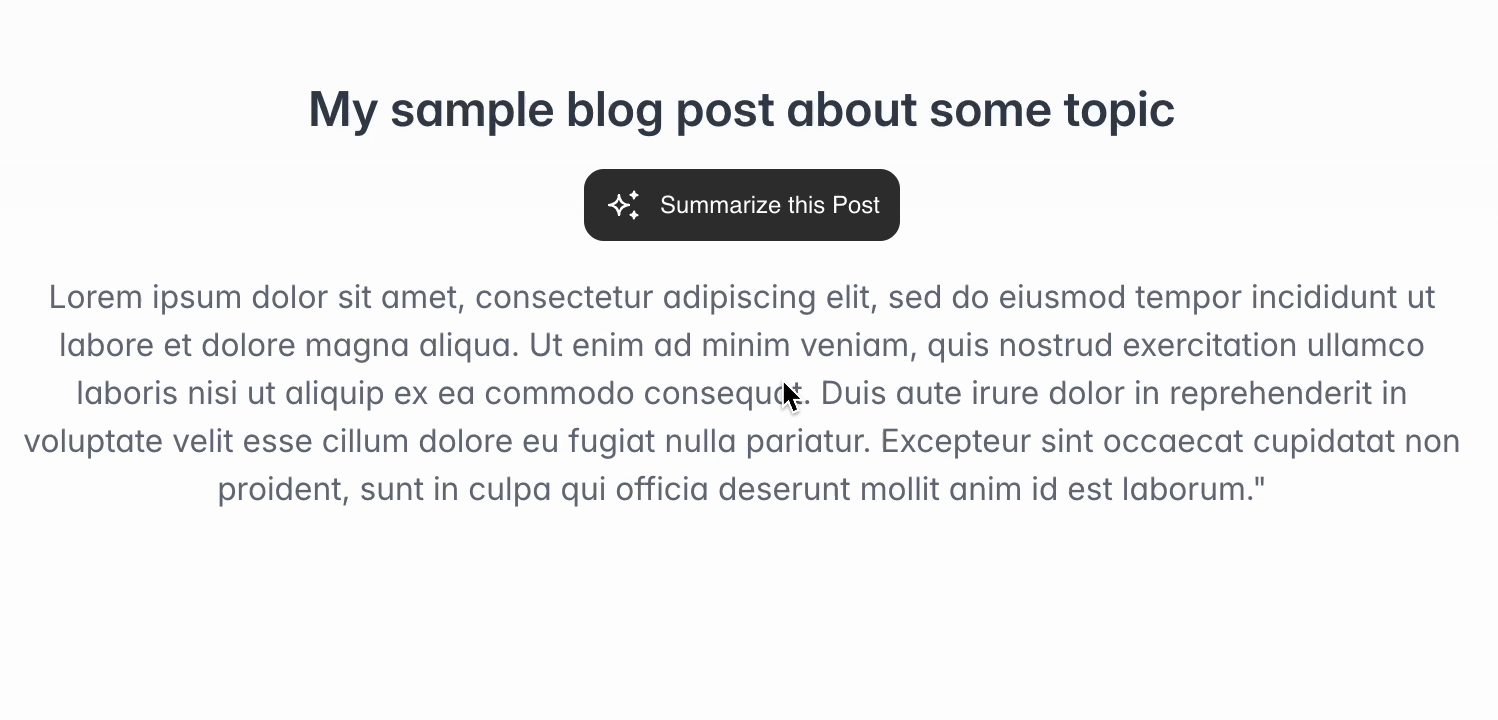
The way people search for information online is undergoing a massive shift.
Large language models (LLMs) like ChatGPT, Claude, and Grok have changed the way users interact with content. Instead of opening a dozen tabs and reading each one, users increasingly turn to conversational interfaces to answer questions, explore products, summarize research, or learn new concepts.
This shift changes how people find content and expect to engage with it. Websites can no longer assume users will scan every paragraph or hunt through navigation menus. If your content or product isn’t easily interpretable through an AI lens, you’re at risk of missing out on valuable user engagement.
As AI becomes a new layer between users and the web, website owners and product builders need to meet users where they are: inside the AI chat interface.
Turn Traffic into Conversations
Rather than competing with AI tools for attention, or blocking AI crawlers outright, websites need to integrate with them.
Most LLM chat tools, including ChatGPT, Claude, and Grok, support the ability to prefill a prompt via URL parameters. That means a website can direct a visitor to an AI tool with a custom prompt already written for them, teeing up a conversation about your product or content.
Here are some example link formats various LLM providers use:
https://chat.openai.com/?prompt=
https://www.perplexity.ai/search?q=
https://www.google.com/search?udm=50&aep=11&q=
https://claude.ai/new?q=
https://x.com/i/grok?text=
Everything after the = is where the prompt goes (URL encoded):
https://chat.openai.com/?prompt=I%20would%20like%20to%20know%20more%20about%20the%20web%20page%20https%3A%2F%2Fpromptpush.ai.
This creates a new opportunity: instead of a passive visit, you can turn pageviews into interactive sessions.
Imagine you run a product page for an analytics SaaS. You can include a button that says:
“Ask ChatGPT how this integrates with Google Sheets”
Clicking that button opens ChatGPT with a preloaded prompt that might say:
“You’re a data analyst exploring a product called AcmeAnalytics. Visit https://acmeanalytics.com/features/google-sheets and explain how this product integrates with Google Sheets, using clear examples.”
Now, the visitor is engaging with your product in a conversation tailored to their role and interests; you’ve made it easier for them to learn in a way that feels personal and interactive, in an interface they might prefer.
Driving Deeper Engagement with AI
One powerful aspect of LLMs is their ability to link back to the web. ChatGPT, Claude, and Grok often supplement their answers with links — and those links can include pages on your site.
That means pre-prompted conversations can become discovery engines for your content. With the right prompt structure, you can encourage the AI to:
- Reference other blog posts or docs on your site
- Summarize a long page while pointing users to specific calls to action
- Offer implementation advice or product comparisons with links to your features
For example:
“Based on https://example.com/blog/zero-trust-guide, summarize the Zero Trust model and link to any relevant tutorials or FAQs on the site.”
This allows users to continue their journey deeper into your content — even if they entered via a single landing page or blog post.
In other words: LLMs are not just tools for summarizing. They can also become contextual tour guides for your site — if you give them the right cues.
Options for AI-Driven Engagement
How might this look in practice? Here are just a few ideas:
On Blogs
At the top or bottom of an article, include a button like:
“Summarize this post with ChatGPT”
Or:
“Ask for more examples of this concept”
Let AI extend the post into a more tailored, reader-specific explanation.
In Technical Docs
Near code snippets or walkthroughs:
“Walk me through this implementation”
Or:
“Explain this to a junior developer”
You empower users to learn at their level, without cluttering your documentation with edge cases.
On Product Pages
Help buyers get the answers they’re looking for:
“Compare this to other tools”
“Ask how this fits into your workflow”
Prompted correctly, AI can walk users through use cases, integrations, and positioning — all using the content you’ve already provided.
Introducing PromptPush
Most site owners won’t want to hand-code all these links and buttons for every page or provider.
That’s where PromptPush comes in.
PromptPush makes it easy to embed customizable, AI-powered share buttons into your site. With just two lines of code, you can drop in buttons that open ChatGPT, Claude, Grok, or other AI tools with your custom prompt — already filled out and ready for the user to launch.
- Define the prompt exactly the way you want it
- Choose the LLMs you want to support
- Customize the button text and style to match your brand
You can create buttons like:
Ask ChatGPT about this page
Walk me through this setup
Summarize with AI
Behind the scenes, PromptPush takes care of all the URL formatting, prompt encoding, and provider-specific quirks — so you can focus on writing great prompts and engaging your audience.
Summary
We’re entering a world where your site is increasingly interpreted and summarized by AI before it ever reaches the user.
PromptPush helps you guide that interpretation. It’s not about tricking the LLM — it’s about offering it the right context so it can help your users faster, more clearly, and with better outcomes.
Instead of losing engagement to AI interfaces, PromptPush lets you become part of the conversation.
Whether you’re a marketer, developer, educator, or SaaS builder — PromptPush is the easiest way to embed AI-native interactions into your site.